Driving the Ioniq 5 N eN1 Cup Car Will Make You an EV Track Day Addict
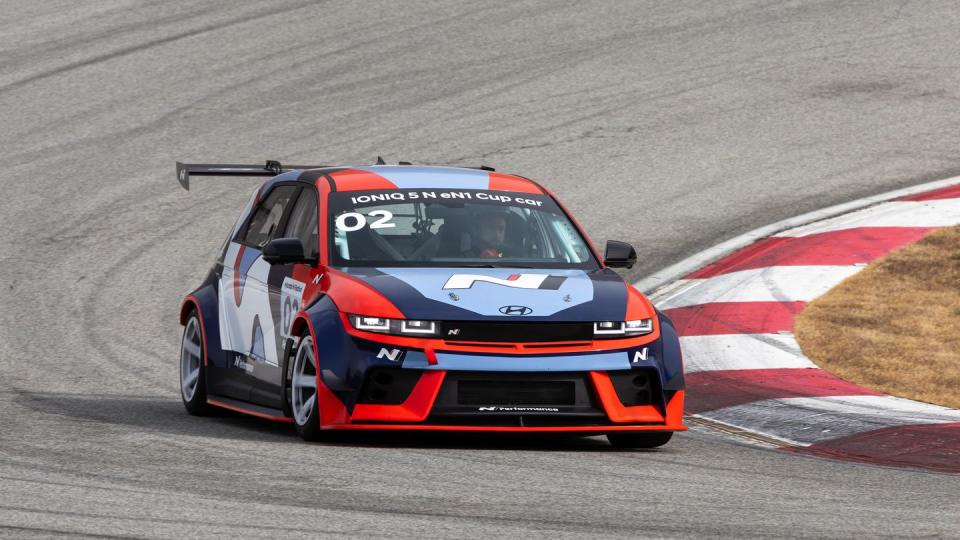
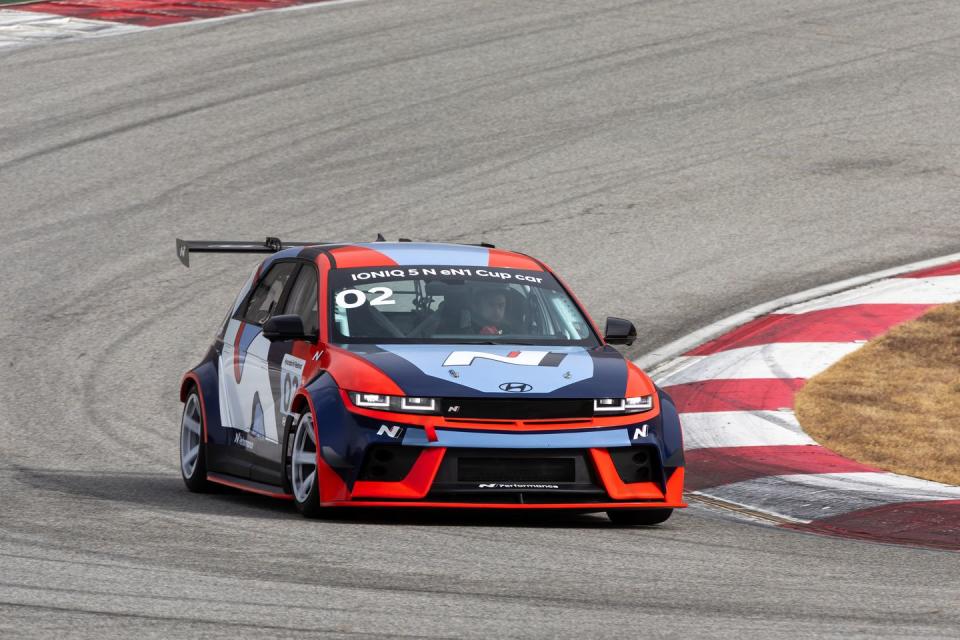
It's a little weird to strap yourself into an EV that's raucously idling and burbling as it sits there in the pit lane, but that's exactly what the Hyundai Ioniq 5 N eN1 Cup car does. Or it did, at least, before the sound system in my car shorted out, leaving me with only my internal monologue and the complaints of its slick Kumho tires for the rest of my sessions behind the wheel.
But my first session inside Hyundai's latest and most powerful racer was a noisy one, the car screaming its way to a simulated redline and barking through each and every pretend gear. It's all silly and it's all unnecessary, but I would argue that no form of motorsport is necessary, so I don't hate it.
Sound is just one of the unique touches in Hyundai's latest track day toy, which will soon star in its own one-make race series. With a starting price of around $100,000 plus minimal on-track running costs, the eN1 is far more affordable than your average gutted and caged 601-horsepower racer.
It's also a lot more playful, which makes for a very compelling proposition.
A New Kind of Formula
The eN1 Cup car is Hyundai's race-ready flavor of the Ioniq 5 N. This track-only EV is wrapping up its final testing and development now, ahead of a racing debut in May. The speed addicts in Hyundai's N division gave the eN1 the usual track day upgrades, including composite bodywork, an ankle-biting splitter and dive planes, polycarbonate windows, and the requisite big wing out back.
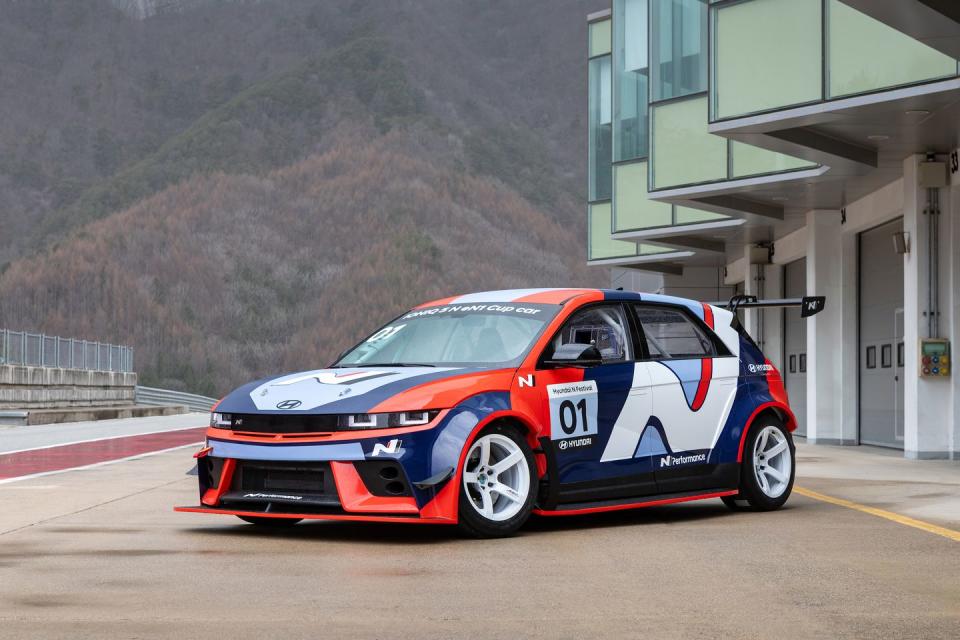
Two-way adjustable dampers replace the roadgoing 5 N's adaptive suspension, and they're tasked with keeping smaller, 18-inch wheels on the ground. A more aggressive offset expands the eN1's stance by 160mm (6.3 inches), and it also receives a 52mm (2.0-inch) drop.
An AP Racing brake setup with six pistons at the front and four at the rear replaces the street car's stoppers, still augmented by the 0.6 G that the electric motors can regenerate under braking.
The interior has also been gutted, and that, plus the composite bodywork, results in a massive 507-pound weight savings over the road car. Mind you, it still weighs a not-insignificant 4,343 pounds. It also makes the same power output as the regular Ioniq 5 N, which is 601 horsepower, with an additional 40 ponies available in 10-second bursts. For the record, that's more power than IMSA's GT3 class allows.
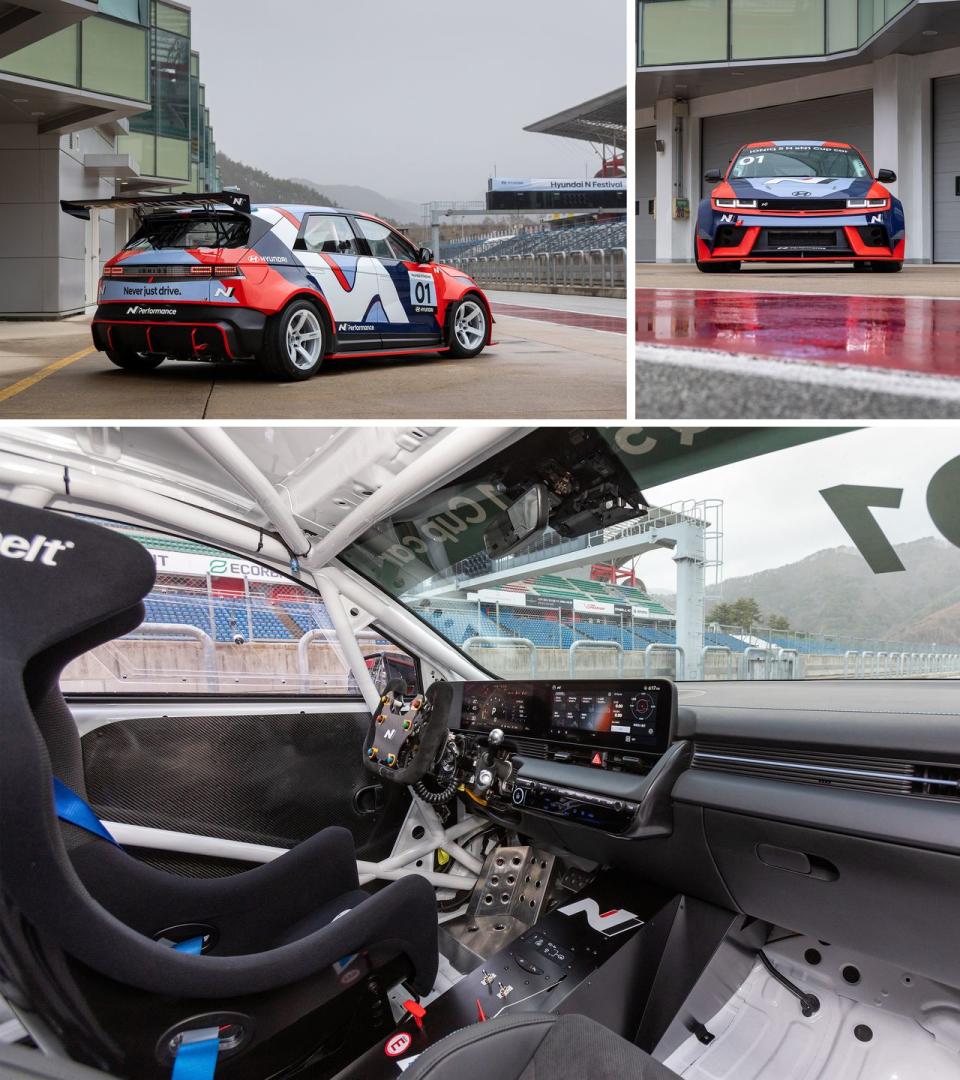
On the safety side, an FIA-legal cage frames the interior, and there's a fire suppression system installed in there as well. Suppression systems are hardly novel in race cars. In fact, they're often mandatory, but this one is a little different in that it's directed at the driver. The intent is not to extinguish the flame but to provide more time to get out of the car.
Once they start, EV battery fires tend to burn for a good while. Anyone who's ever seen one knows they're terrifying things. (Then again, anyone who saw what happened to Romain Grosjean in 2020 knows that gasoline isn't exactly friendly stuff, and there's a scarier story if your memory stretches back to Rick Mears.) Hyundai has also added additional crash structure around the battery pack and mounted a fireproof blanket between it and the chassis. That's not because the roadcar wasn't safe enough, but because crashes involving the eN1 have the potential to be a lot more violent.
The final piece of safety equipment is a six-point harness and Sabelt racing seat, a model that was clearly proportioned for Korean hips. It was a painful squeeze to get my American posterior in there, but it would prove to be well worth the discomfort.
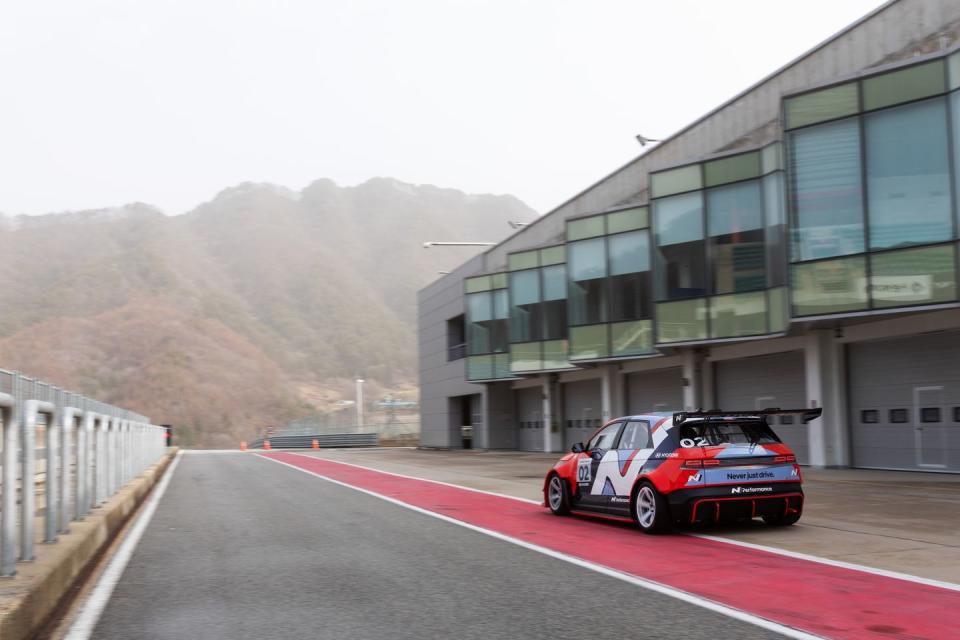
Ignition
Again, the aforementioned synthetic engine note and fake shifting of the Ioniq 5 N eN1 are a bit odd, but there is a method to this madness. Anyone who's ever had to learn a new track in a hurry knows that it's helpful to identify corners by their most appropriate gear. It's a fundamental part of any bench-racing session, and with the Ioniq 5 N, Hyundai is continuing that same experience.
The petite, quick-release, carbon fiber steering wheel in the eN1 has a set of paddles mounted behind it that shift a virtual transmission. You can toggle through six gears, and you'll get a simulated RPM tone to match, even a little kick of acceleration when you upshift under full throttle.
It's all optional, and you can turn it off, but Hyundai's leaning into it. You can customize what the eN1 sounds like, with a suite of different tones. When the eN1 kicks off its racing career this summer, each team will be given a choice of what they want their racer to sound like. No two will use the same tone.
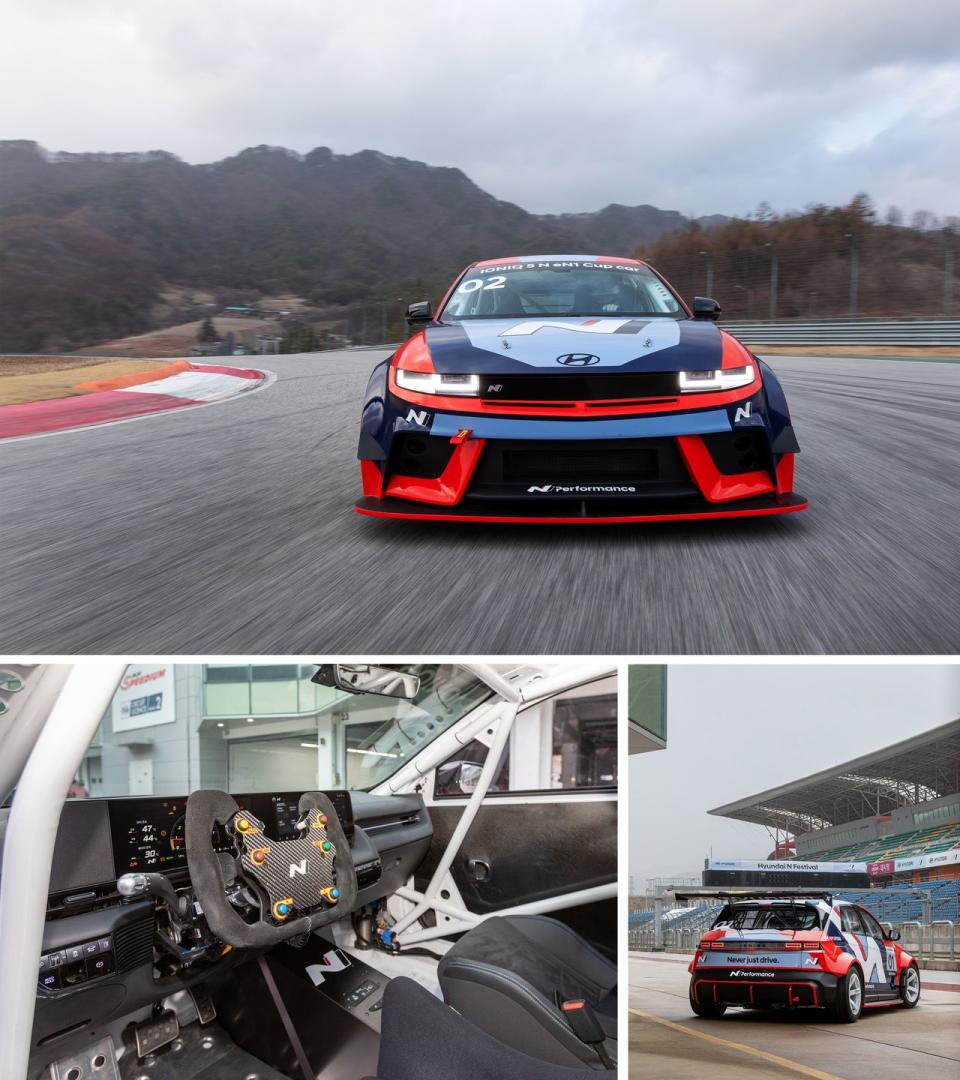
In other words, fans of a given driver will be able to hear them coming before they come into view.
Nobody heard me coming, in part because the track was deserted. Also, after the first session, my car refused to make any noise at all. This is a pre-production machine, and that software glitch made the rest of my on-track sessions unusually quiet. I could readily hear which of the four Kumho slick tires was working the hardest through a given corner, and as I got the AP Racing brakes up to temperature (no small feat on an unexpectedly frosty morning), I could hear them talking to me, too.
I could hear the creaks and compressions in the chassis as I got more confident launching the car over the curbs, and for better or worse I could hear myself think. This is radically different than the times I've enjoyed other race-only machines, even electric ones like Porsche's GT4 ePerformance.
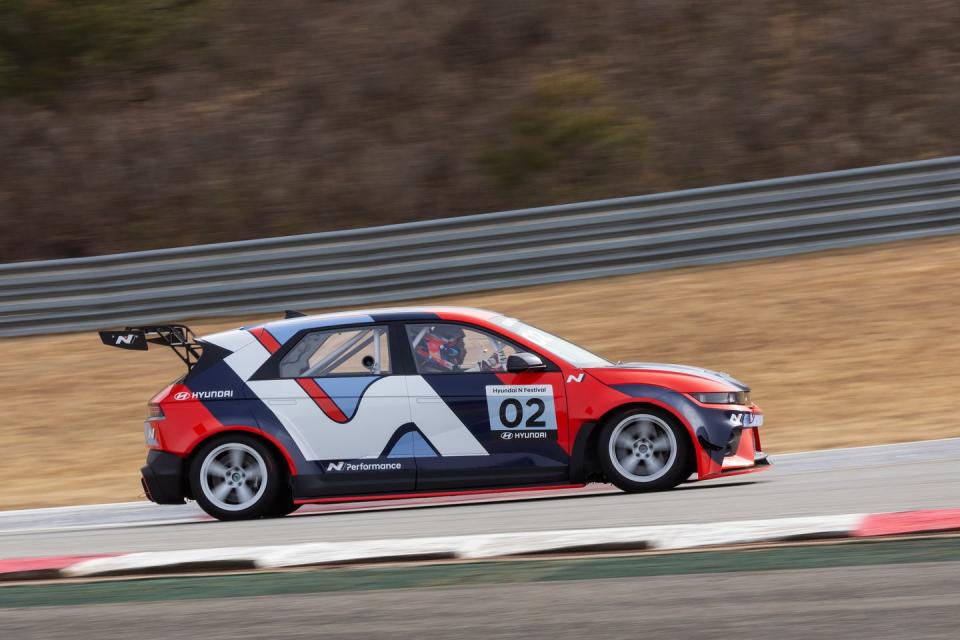
Porsche's battery-powered racer relies on a bespoke drivetrain with straight-cut gears. Thanks to this, it absolutely screams at full acceleration, a thrilling sound so loud that I needed earplugs inside the cockpit. The drivetrain powering the eN1, however, is a bit more familiar.
Proving a Point
The Ioniq 5 N eN1 is so quiet because it uses the same motors as the roadgoing Ioniq 5 N. Those motors draw current from the same battery pack and control systems, all kept in check by the exact same cooling setup as the road car.
Outside of some software tweaks, Hyundai hasn't changed a thing on the powertrain side of the equation. While that may seem like cheaping out, Hyundai says this was by design. For the company's N division, this isn't just a race car. This is a proof of concept, a demonstration that the 5 N is capable of proper racing.
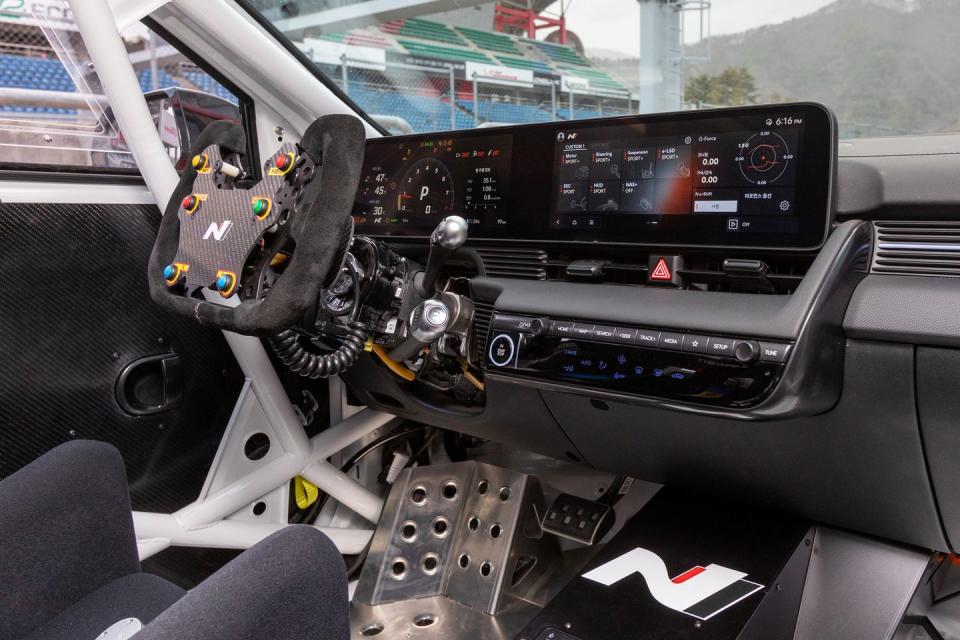
Not only is it capable of racing, but Joonwoo Park, a VP at Hyundai overseeing the N brand, said that aspects of the Ioniq 5 N were included specifically to bolster the eN1.
Park said that a common point of feedback in the Ioniq 5 N is that it has too many tweakable parameters, performance-related knobs and sliders that most consumers won't use. "But we actually had a reason," he told me. "The brake balance, as well as torque balance, those kinds of things can be used for the purpose of motorsports."
Having a boatload of adjustable features already baked into the Ioniq 5 N road car's powertrain, Park said, is partly why the eN1 is so relatively affordable. Going forward, learnings from the eN1 are already being integrated into Hyundai's next N car. Sadly, Park wasn't willing to dish out any details on that just yet.
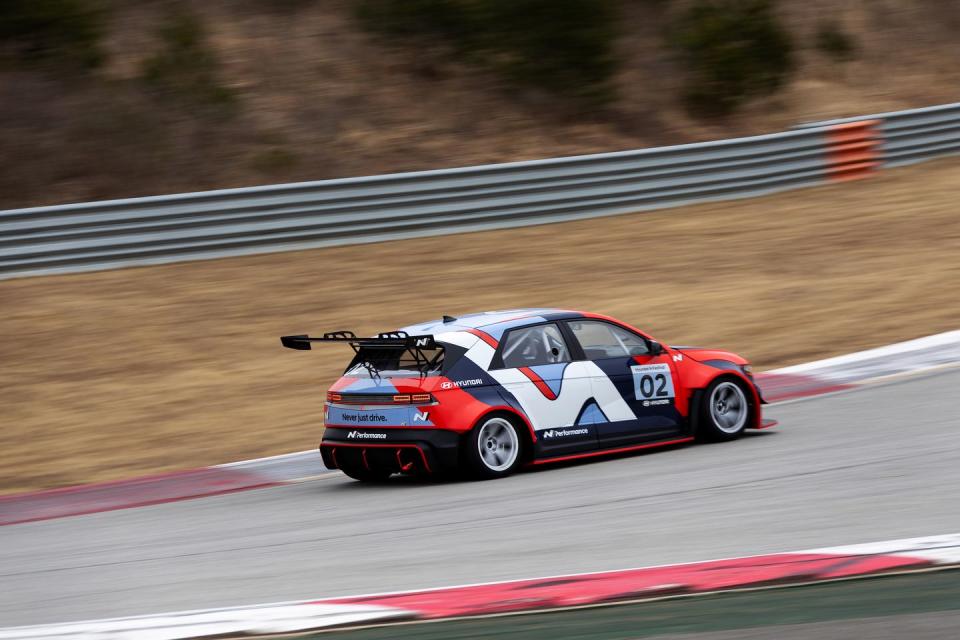
Going Racing
The eN1 still has about a month of testing left before it's deemed race-ready. It's set to turn its wheels in anger for the first time in May. Ten teams have signed on to run the cars, and Park said that they requested a gradual ramp-up so that everyone can figure things out.
The first two rounds of this eN1 cup will be bracketed, head-to-head shootout events similar to the Race of Champions or a WRC super-special stage. The first sprint race will take place in September, with the inaugural season running five events, during which Hyundai and the competitors will determine what works and what needs revising.
They'll experiment with limiting the number of times that drivers can get those 10-second power boosts, and race officials might even limit a car's power output instead of dishing out time penalties for misdemeanors.
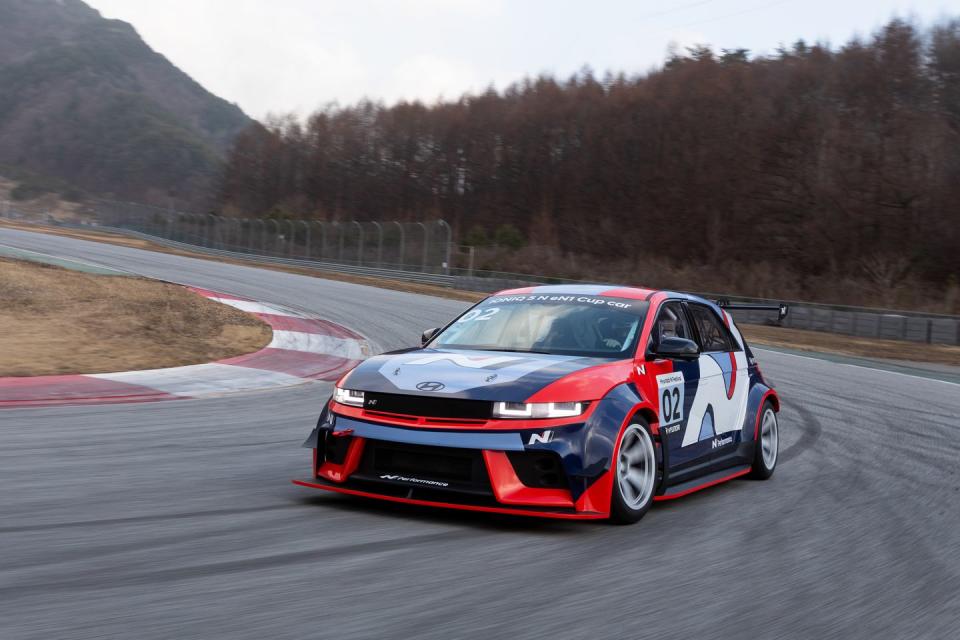
Charging is another thing that Hyundai will feel out. At Inje Speedium, where I tested the eN1, Hyundai installed a suite of chargers that can simultaneously deliver 250 kW of juice to 10 cars, enough to bring each from 10 to 80 percent in 20 minutes. At other tracks, Hyundai will deploy a mobile charger.
Teams will have three spec tires to choose from, with each of the three major Korean tire manufacturers getting in on the game: Kumho, Hankook, and Nexen. I did my driving on Kumhos, slick tires that were likewise still under development yet performed admirably well despite the weather that ultimately killed my session.
Next Steps
Toward the end of my time with the eN1, the murky skies about Inje Speedium in eastern Korea finally opened up, a drizzle turning into steadier rain and even a few snow flurries. Despite all this and the slick tires, the Ioniq 5 N eN1 remained remarkably stable, planted, and, most importantly, fun.
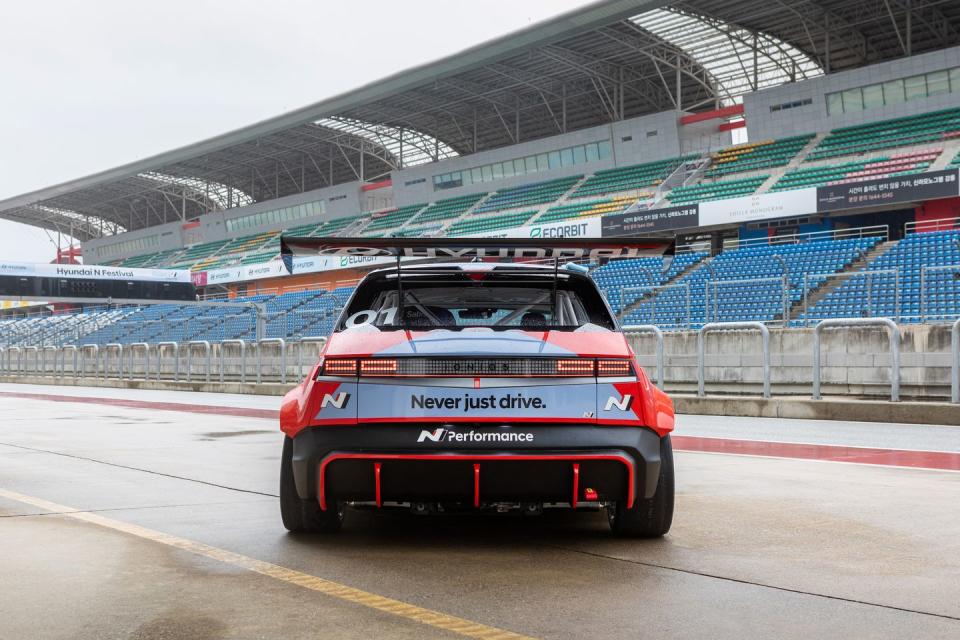
I was genuinely impressed by how quickly I could get back on the throttle, foot to the floor, even on Inje's many off-camber turns. Over-exuberant moments with the accelerator usually resulted in a safe push from the front end, but I have to figure that the car was given a journalist-safe setup. A few tweaks to that adjustable suspension should make it a little more balanced.
The all-wheel drive nature of the car also helped boost stability, ensuring I could keep launching off the big curbs around Inje even when they were wet and slick. The eN1's razor-sharp steering plus the remarkable power of those brakes made the car feel much lighter than its 4,343 pounds, and the overall raw feeling of the machine made for a really good time.
Proper race cars aren't necessarily supposed to be fun, but fun is what Hyundai's N division is all about. It makes sense that this one would be approachable and engaging. That's doubly important, given how affordable it will be. Hyundai's track-ready Elantra N TCR costs somewhere north of $150,000, plus the added costs of fuel and various other fluids that will need regular changing.
According to Hyundai's Park, running costs on the eN1 will be effectively nil—beyond the inescapable tire tax that every racer must pay.
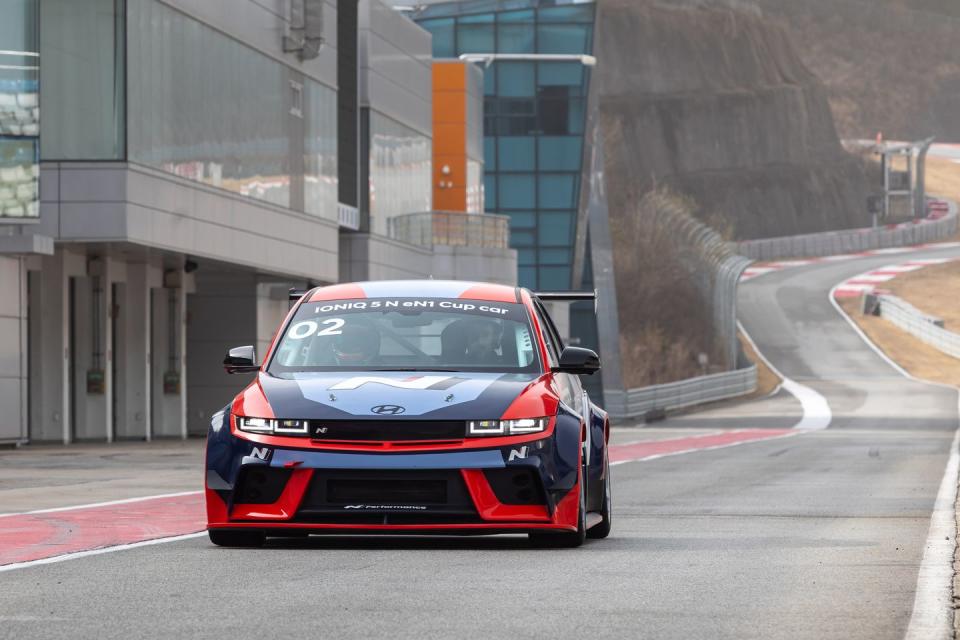
And Hyundai really does want its N customers to hit the track, even if they can't swing an eN1. Hyundai is working with select tracks around the world to install fast chargers. Inje in Korea was the first, but N's Joonwon Park told me that the Nurburgring is next, followed by a certain track in California. He wouldn't say which, but were I a betting man, I'd guess it's the one that features a certain wine-themed corner.
Park said he wants more fast chargers at more tracks, but local regulations and policies are slowing down the rollout. That's the bad news. The good news is that once these chargers are installed, they'll be free for use by any N owner.
A track-day session minus the outrageous fuel cost at the track and with charging quick enough that you won't have to miss a session? Maybe the future of EV trackdays won't be so bad after all.

A car-lover’s community for ultimate access & unrivaled experiences.JOIN NOW Hearst Owned
You Might Also Like

 Yahoo Autos
Yahoo Autos 